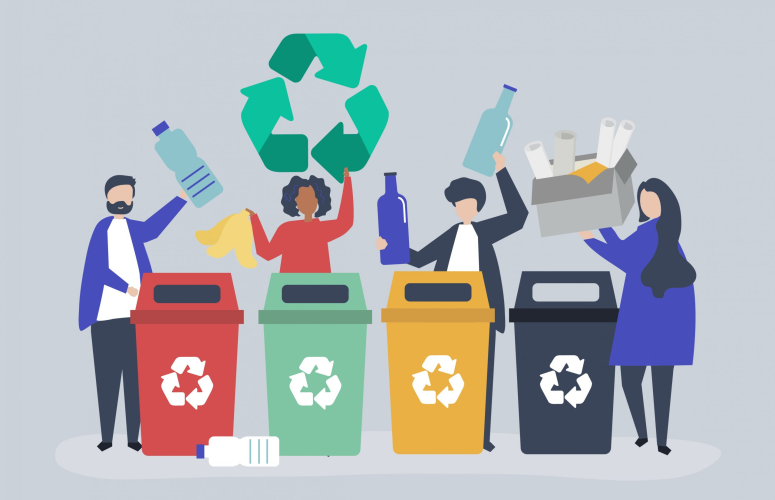Every day, Californians discard 6 pounds of trash, or about 2200 pounds of garbage annually, the equivalent of a subcompact car. Each of these results exceeded the state’s 2021 goal for daily weight gain of 2.7 pounds per person. PPD is the unit of measurement used by the California Department of Resource.
Recycling & Recovery (CalRecycle) takes into account both the recycling rate and total disposal when compiling its statistics, including dumpster rental usage. Why?
The goal is to reduce waste, and a higher recycling rate does not assure little trash if residents consume so much stuff, which could lead to an increase in both recycled & composted content.
Unfortunately, the situation is deteriorating rather than improving. Recycling rates have dropped from 50% to 44% since 2012, while trash disposal has raised from five to six pounds per resident. Despite the fact that California’s recycling rate is above the national average of 34.7 percent, the state’s 2021 goal of 75 percent is still well below.
As the state’s current trajectory in waste management indicates, now is the time to redouble efforts toward meeting the state’s 2021 targets. As a result of these changes, the state has to deal with the consequences. Millions of tons of scrap material from the United States have been sent to China for recycling for decades now.
China stopped accepting US garbage last year, claiming it was very contaminated & unsellable for recycling. As a result of this policy shift, the US was ill-prepared. Recyclables have accumulated in California facilities due to the lack of a viable export market, namely China.
Recyclers in Sacramento, for example, stopped grouping mixed plastics at the end of July 2021 because of the cost and revenue losses incurred as a result of the disruption.
When things change, this enables new chances to arise. As of now, recycling in California has created many jobs, businesses, and billions of taxable income, new products to fight pollution, and services for the state’s businesses.
A change in China’s policies gives California a chance to develop its recycling economy by improving the way it collects and sorts waste. China used to do this for the state, but for now it doesn’t.
How Landfills Work

Don’t refer to it as a dump. Even if you think of it as a simple hole in the ground, it’s far too costly to build and operate. Municipal solid waste is accepted at such a Class 3 landfill (MSW). It’s the place where all of your household garbage is deposited each night.
What exactly is Class 3 landfill, and how does it differ from other landfills?
Landfills within this classification are constructed using cutting-edge engineering techniques to keep waste out of the environment while still allowing it to be contained.
The location, design, operation, & closure of Class 3 landfills are strictly regulated by federal and state laws in order to secure human environment and health. One of the most important components of an integrated waste management system is Class 3 landfills.
South California’s municipal solid waste, as well as solid waste generated throughout the United States, are currently dumped in these landfills.
When Landfill Reaches Its Maximum Capacity, What Happens?
California’s landfill capacity is limited and rehabilitated to make way for green spaces like parks & community grounds when it reaches its limit. After capping, these can be managed to maintain for up to thirty years.
Landfills can take years to fill to capacity, depending on the type and volume of waste disposed of. If Glendale dumpster rentals keep on bringing junk from local users, it will fill faster. A clay, final layer of cover material, and vegetation, is then applied to a landfill to securize it.
Keeping rainwater out and odors in is the primary function of this cap layer. When the site is restored for recreational or light cultivation, the plants have been chosen to fit the needs of the area.
Why Do We Need Landfills?
Businesses and households generate a lot of waste, and landfills are needed to dispose of it. As the US population grows, so does the amount of waste that is generated by humans.
No matter how much the recycling rate has risen, there will always be general waste (items that cannot be recycled). So residents should try to reduce their waste by all means!







Add comment